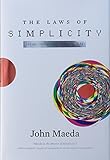This has been lurking in my RSS aggregator for the last couple of months, patiently waiting for me to get around to reading it (one of the core benefits of using RSS feeds). David Gurteen provides a nice starting point for discussion around attributes of effective knowledge workers.
While I would certainly want people with these attributes working for me and around me, I am less certain that these are uniquely related to knowledge work. Nor, for that matter, am I certain that that matters. Your thoughts?
What makes an effective knowledge worker?
By David Gurteen
At the Osney Media European Knowledge Management Thought Leaders Forum last week In London we broke into several “discussion pods” to discuss topics of interest. Earlier, I had proposed a theme of “What are the habits of effective knowledge workers?” and was pleased that this was one of the topics selected.
There were about five of us at our table and we started by getting into a discussion about what were we talking about: habits; skills; attitudes; behaviors; values; mindsets or what? We decided quite quickly that we would run out of time if we focused on these differences and decided just to brainstorm everything without attempting to categorize them. This is the list we came up with. As the others carried on a conversation – I just scribbled down the key attributes – here they are – pretty much in the order they arose and unedited.
- connect people with people
- connect people with ideas
- are good networkers
- do not follow the rules
- have strong communication skills
- like people
- feel good about themselves
- motivate others
- are catalysts
- ask for help
- demonstrate integrity
- are self reliant
- open to share
- are not afraid
- are goal oriented
- are able to identify critical knowledge
- add value to the organization
- have strong subject expertise in a specific area
- network for results
- trustworthy – can be trusted and trusts others
- make decisions
- are not insular
- do not conform
- push the boundaries
- assume authority – ask for forgiveness, not permission
- strong belief in the value of knowledge sharing
- are informal active leaders
- take a holistic view
- are catalysts, facilitators and triggers
- good listeners – they listen first
- do not need praise
- see the wider picture
- work well with others
- do not have a ‘knowledge is power’ attitude
- walk the talk
- prepared to experiment with technology
- playful
- take calculated risks
An interesting set of attributes but by no means exhaustive. Will be interesting now to analyze them and pull them into some sort of structure and order. Seems to me though that many of these attributes are ‘soft’ in nature and difficult to teach or learn. How does someone learn ‘not to need praise’ for example and just how important an attribute is it?

